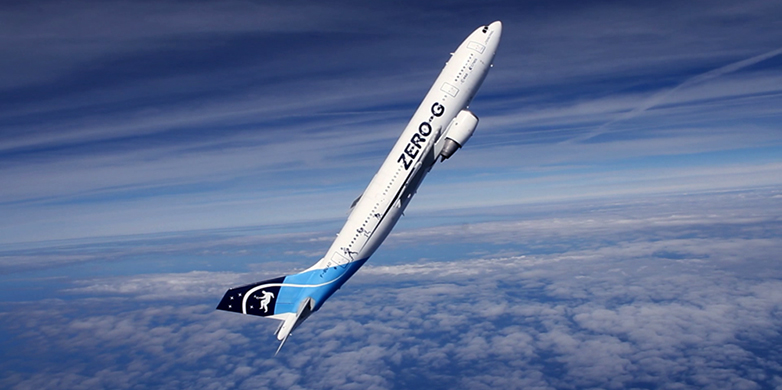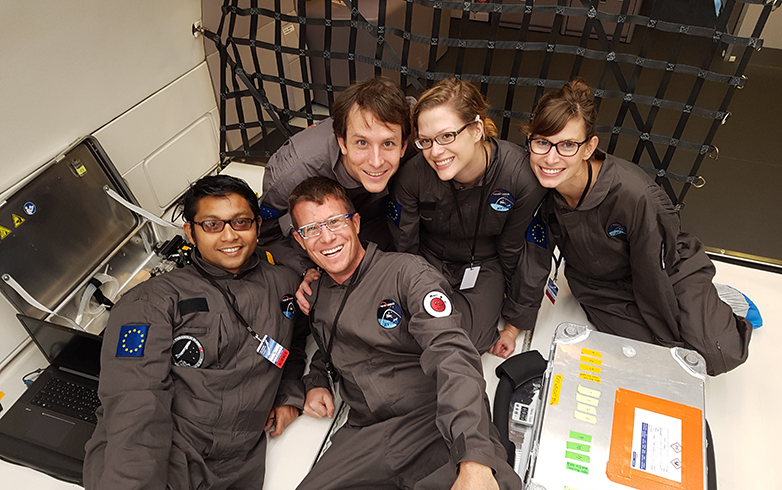Researching phytoplankton in zero gravity
Swiss researchers have used a parabolic flight to investigate the effects of weightlessness on biological and physical processes. On board was an experiment from ETH Zurich designed to understand the influence of gravity on the migratory behaviour of aquatic microorganisms.

A high-flying and unusual experiment: “We were able to test an important hypothesis: changes in relative gravity, which routinely occur in aquatic environments due to turbulence, have a significant impact on the behaviour of microorganisms,” reports Roman Stocker after the second Swiss zero-g research flight.
The ETH Professor of Hydromechanics and Groundwater, together with four researchers from his team, were on board the Airbus A310 Zero-G as it headed south from Dübendorf airbase last Saturday and performed a series of parabolic manoeuvres over the Mediterranean. Between each ascent and descent there were 22 seconds of weightlessness. The ETH researchers used this rare opportunity to investigate the impact of gravity on the physiology and behaviour of organisms at the base of the aquatic food web, which play a vital role in numerous environmental processes.
Focus on migratory micro-algae
The researchers focused specifically on phytoplankton: single-celled photosynthetic organisms that are ubiquitous in lakes and oceans. During the day, these microorganisms swim towards the light at the water surface, while at night they migrate to greater depths, where there are more nutrients. This migratory behaviour is ecologically significant and societally important, as many migratory species of phytoplankton cause blooms that can be toxic to fish and humans.
“We know that turbulence in the water can hinder the migrations of phytoplankton, but the underlying mechanism has remained unknown,” explains Stocker. He and his team hypothesize that tiny eddies in the water send single-celled organisms into a spin, which causes a continuous change in their perceived gravity relative to the direction of travel. This hypothesis resulted from laboratory experiments with artificial turbulence that the group has performed to date. Now, Saturday’s parabolic flight has allowed the researchers to test how changing gravitational strength influences the migratory behaviour of phytoplankton.

Simultaneously measuring gene activity and filming
To do this, Stocker’s group set up an experimental apparatus in the plane that allowed them to simultaneously film the microscopic cells swimming under variable gravity conditions and to measure their gene expression in reaction to the gravitational changes.
A full analysis of the data will require time. “We hope to gain valuable insights into one of the most important microorganisms on Earth. Ideally, the data will reveal the mechanism through which phytoplankton react to turbulence and perceived gravitational changes, enabling us to better predict the environmental processes for which these tiny organisms are responsible,” says Stocker.
The parabolic flight was organised by the University of Zurich’s Swiss Parabolic Flights initiative.
